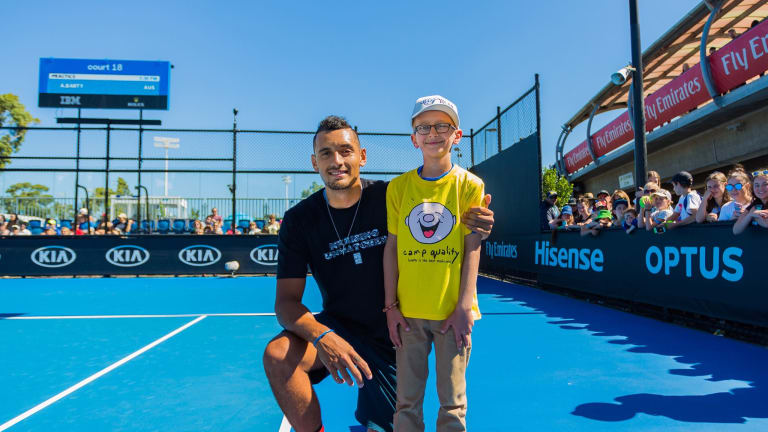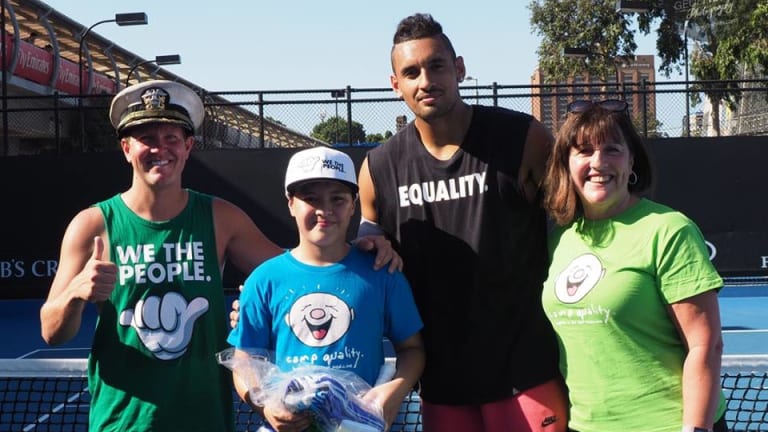For our sixth annual Heroes Issue, we’ve selected passages from the last 50 years of Tennis Magazine and TENNIS.com—starting in 1969 and ending in 2018—to highlight 50 worthy heroes. Each passage acknowledges the person as they were then; each subsequent story catches up with the person, or highlights their impact, as they are now. It is best summed up with a quote from the great Arthur Ashe, that was featured on the cover of the November/December issue of this magazine in 2015: “True heroism is remarkably sober, very undramatic. It is not the urge to surpass all others at whatever cost, but the urge to serve others at whatever cost.”
Nick Kyrgios says he loved watching Roger Federer as a child—and still does today. “I remember watching him play,” Kyrgios told reporters. “I still watch him a lot when I’m in my room doing nothing. I would just go on YouTube and watch him. I think he’s the greatest of all time. He’s the one role model I have, off the court as well, because of the way he carries himself, helping people.” – Matthew Cronin / September 2015
A Nick Kyrgios practice session is much like the ultra-talented Australian’s attitude during match play: consistently inconsistent. With no discernible routine, the 23-year-old is just as likely to be chatting on the sidelines or playing a friendly game of “Butts Up” as he is to be blasting groundstrokes with his hitting partner.
But there is one common thread: Kyrgios regularly has young players join him for a little practice of their own. Last summer he invited fans to come “chill and hit” during his Rogers Cup training blocks. At this year’s Australian Open, he brought a young cancer patient on court halfway through his allotted practice time, and spent the rest of it talking, signing autographs and hitting balls with the star-struck youngster.
“I’m not sure which of us had the better day,” Kyrgios wrote in Australia’s PlayersVoice.
Unlike the tennis world at large—the fans and media who eagerly await the day Kyrgios’ focus is as sharp as his forehand—children want very little from their hero beyond a smile, a signed ball and maybe a selfie or two.
“I love the feeling that a moment of my time can literally make a world of difference to the child,” says Kyrgios. “For that moment, all of their troubles are forgotten.”
Kyrgios’ work with children has given him a reason to persevere in a sport that he admits that he doesn’t particularly like. It’s why he has made charity a priority in his early 20s, when many players have yet to develop a philanthropic voice. His piece in PlayersVoice summed it up: “It’s a higher purpose than just collecting a paycheck.”

